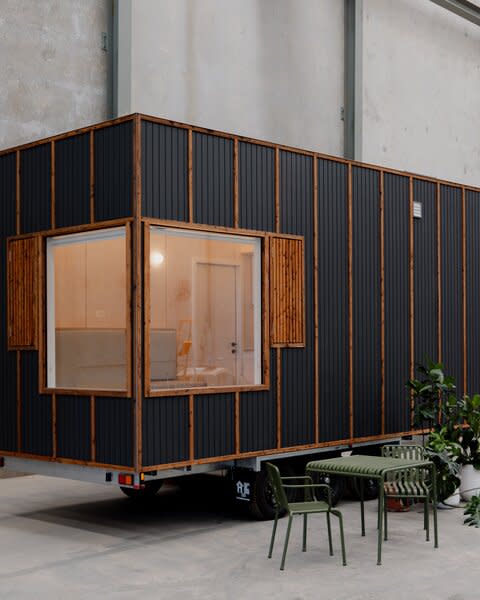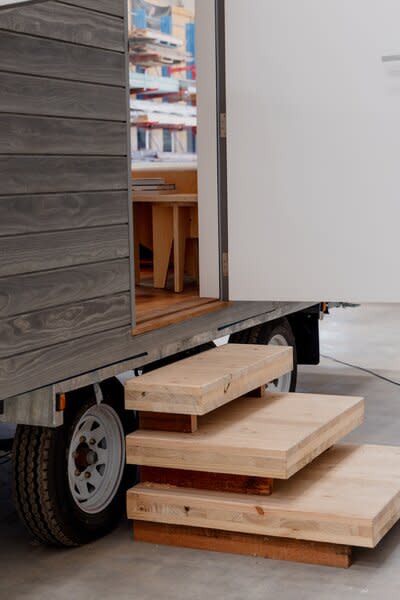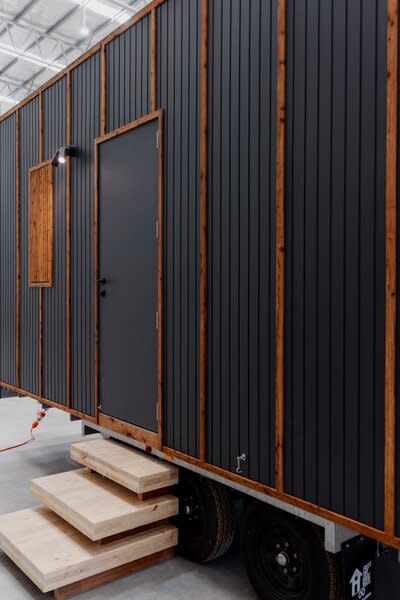Want to Downsize? These 155-Square-Foot Tiny Homes Might Be the Upgrade You’re Looking For
Australian company Fabprefab’s $116K unit comes with precision-milled plywood interiors, Fisher & Paykel appliances, and off-grid capabilities.

Welcome to Tiny Home Profiles, an interview series with people pushing the limits of living small. From space-saving hacks to flexible floor plans, here’s what they say makes for the best tiny homes on the planet. Know of a builder we should talk to? Reach out.
Tony Olding founded Fabprefab in 2016 wanting to address problems in the construction industry, like material and labor shortages, a rise in building costs, excessive waste, and endless delays. Now, the prefab builder has a new, compact design meant to target another issue. "Roam, a tiny home on wheels, was developed to ease some of the housing shortages and pressures currently being experienced in Australia," says Fabprefab’s managing director, Ed Callanan. "In the right setting, it eliminates approval processes that can often be long and drawn out."
Here, Callanan explains how Fabprefab leverages seven years of experience in prefab housing to outfit their 155-square-foot design with the same quality and detail found in their larger models.
Note: All prices stated in this story are in AUD.
What makes Fabprefab stand apart?
In Australia, you don’t need a builder’s license to build tiny homes on wheels, which might be worrisome for buyers interested in these kinds of small homes as dwellings.
Fabprefab is a registered builder with 55 years of experience in high-end architectural homes. We have a thorough understanding of Australian building codes and regulations, thermal performance, passive design strategies, and bushfire protection requirements, so prospective buyers can rest assured that their new Roam tiny home has been built to the very best quality and meets Australian building standards.
We strive for the best quality materials, like accoya timber for the exterior cladding, which comes with a 50-year warranty and requires no maintenance. We want customers to know they’re investment will last for decades.
See the full story on Dwell.com: Want to Downsize? These 155-Square-Foot Tiny Homes Might Be the Upgrade You’re Looking For
Related stories:




